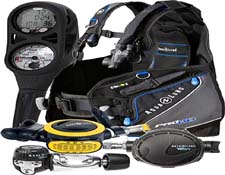Costa Rica

Heritage and Culture
Costa Rican culture is in many ways a reflection
of its racial mix. The predominant influence has
long been European, which is reflected in
everything from the official language -- Spanish --
to the architecture of the country's churches and
other historic buildings. The indigenous influence
is less apparent, but can be found in everything
from the tortillas that are served with a typical
Costa Rican meal to the handmade ceramics sold
at roadside stands. A more recent cultural
influence is that of the United States, which can
be noted in everything from the movie selection at
San Jose's theaters to the fast food chains that line
some of the capital's streets.
An important aspect of Costa Rica's cultural heritage is their love of peace and
democracy. Ticos like to point out that their nation is the exception in Latin America,
where military dictatorships long dominated politics.
They can boast of having more than one hundred years of democratic tradition, and
almost half a century without an army. The army was abolished in 1948, and the money
the country saves by not having a military is invested in improving the standard of living
for Costa Ricans, which has fostered the social harmony that makes it such a pleasant
country to visit.
The Tico
Ticos, as Costa Ricans are commonly known, are
famous for being hospitable, and are quite happy
to live up to their reputation. They are a polite,
well educated and gregarious people, who are
quick with a handshake and a smile.
They are well aware that their country is a special
place, and they go out of their way to
accommodate visitors, pointing them in the right
direction when they get lost, explaining things that
might seem foreign to a foreigner, and helping
make their stay as enjoyable as possible.
It has been said the Ticos are their nation's greatest asset, and once you've experienced
their friendliness and spontaneity, you'll no doubt agree.
Solar gear
Going to the beach is a must when travelling to Costa Rica and a nice suntan is
always possible. It is pointless, however, to try to bronze yourself in just one day
because it takes 24 to 48 hours for the skin to produce malenin, a dark skin
pigment that reduces the againg process caused by sunburns. The healthier option
is to prepare yourself with a PABA-free suntan or sun blocking lotion containing
a high level of melanin. There are even products that contain pure melanin to
dimish premature wrinkles.
The SPF of suntan lotions and sun blocks is presscribed according to skin type.
Light skin, light colored eyes, and blonde or red hair indicate the use of an
SPF-25. For those with light skin and brown hair an SPF from 8 to 15 is
recommended. Olive colored skin that rarely sunburns needs an SPF from 4 to
8. Keep in mind that every time the sun's rays make the color of your skin change
to red or bronze, you are running the risk of getting skin cancer. So, after
exposing your skin for any unusual pigmentation. Don't hesitate to seek medical
advice if you find something out of the ordinary.
Once protected for a sunbath, make certain that irritation, which is produced by
allergies, skin dryness or acne, does not develop. In case of allergy, change your
sun block or suntan lotion. try the product on your skin before buying it.
People
Ticos, as Costa Ricans are commonly known,
are a fairly mixed bunch. Though the majority of
the country's inhabitants are the
descendents of Spanish immigrants, many
families originated from other parts of Europe,
Asia, Africa and, of course, Central America.
You may be surprised by the number of
fair-skinned people you'll see in the country,
especially in the Central Valley. In the lowlands,
more people are mestizo -- that is mixture of
European and Indigenous blood -- whereas the
majority along the Caribbean coast are of
African lineage, and much of the Talamanca
Mountain Range is inhabited by full-blooded
Indians of various ethnicities.
Communications
Costa Rica has one of the most advanced
telecommunications systems in Latin America,
with telephones and fax machines all over the
country, and an increasing number of businesses
on line. To call or fax Costa Rica, dial the
country code 506 before the number. There is
also reliable mail service in the country, and an
ample selection of courier services in San Jose.
Most large hotels in the San Jose area have
cable television, which has US and European
stations. Newspapers and magazines from
North America and several European nations
are sold in many shops and hotels in and around
the capital.
Transportation
It's easy to get around in Costa Rica, and if you
stick with public transport, travelling within the
country can be quite inexpensive. There is bus
service to just about every town and city, and
buses that serve main tourist destinations are of
high quality. Taxis are also plentiful and
inexpensive, and in San Jose they are required
to use meters for most trips. The standard
charge for a taxi between the international
airport and downtown San Jose is $10 US. The
quickest way to get around is to fly, and several
domestic airlines offer daily flights to most of the
popular tourist destinations. There are also
plenty of car rental agencies, most of which rent
four-wheel-drive vehicles.
|



























